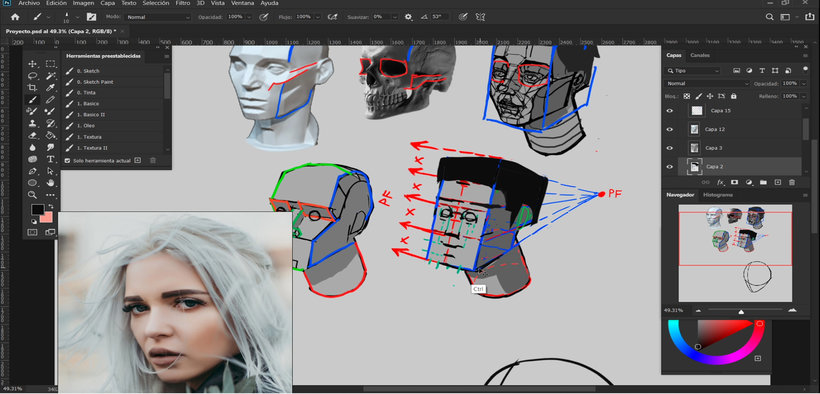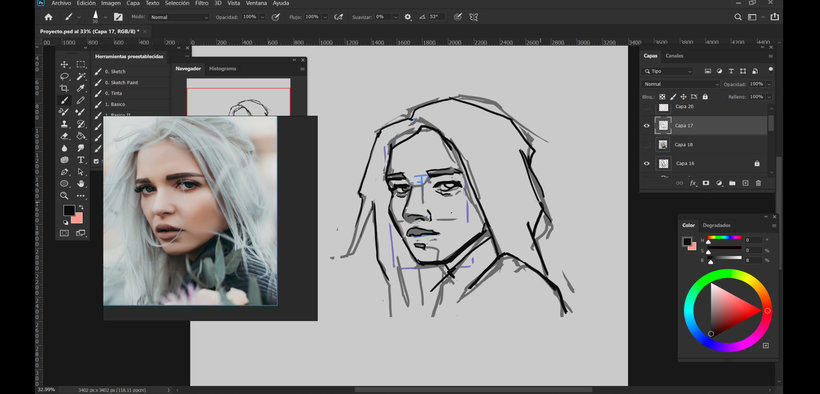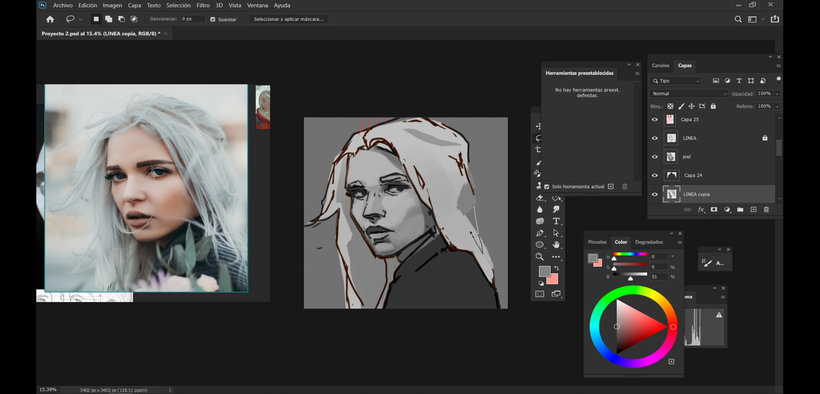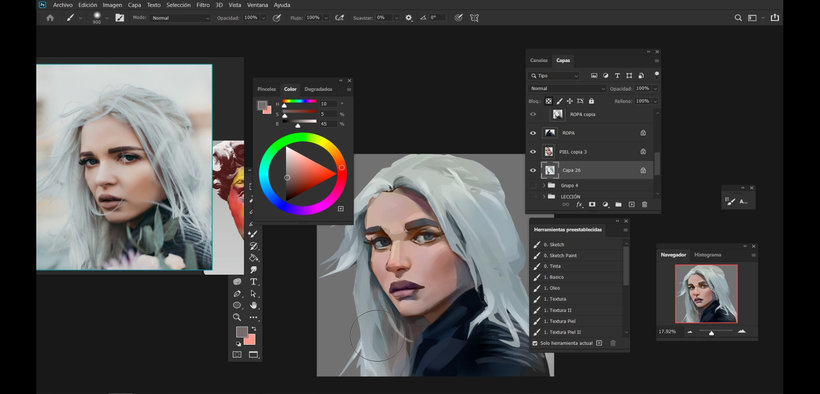Principles of Digital Painting for Portraits
Course final project
A course by Rodrigo Rivas (Ruiveran) , Illustrator and Concept Artist
Joined July 2020
About the final project for: Principles of Digital Painting for Portraits
Principles of digital painting for portraits
“We first start by studying the nature of shadow and light, shape and form, and finally color. Remember: less is more, and the simplicity of your figures in space is the secret to illustrating captivating portraits. Then we did the still life exercise in gray. We exercise our ability to synthesize and map light and shadow to later incorporate more specific aspects of light and volume. Sketch We start the final project with the sketch, with which we return to the elementary forms. If we see the head as a cube and then as a series of simple volumes, we can connect much better with the idea that in the portrait we are painting illuminated planes and others in shadow. We apply the basic proportions of a head and finish our drawing ready to be painted. Remember that the face comprises approximately half the height of the head, and the width of the face is from 5 eyes, following realistic proportions and canon.





Partial transcription of the video
“Hello. we have reached the end of the course. and I hope it has been useful to you in getting closer to the fascinating world of shadow. light. and color. Before we finish. I have some recommendations for your final project. Use your own portraits and references. as this will enable you to express yourself through your tastes. preferences. and knowledge. Consider your portrait as that of a character. which will allow you to explore and convey your unique perspective and artistic vision You've harbored this vision in your thoughts for so long. yet lacked the courage to bring it to life art. ...”
This transcript is automatically generated, so it may contain mistakes.
Course summary for: Principles of Digital Painting for Portraits
-
Category
Illustration -
Areas
Digital Painting, Painting

Rodrigo Rivas (Ruiveran)
A course by Rodrigo Rivas (Ruiveran)
Rodrigo Rivas is a digital illustrator and conceptual artist from Peru who is dedicated to creating characters and stories through painting. He has worked as an illustrator for advertising, editorials, storyboard animation, video games, and more.
In 2019, he was part of the campaign team for the Pan American Games in Lima and was a finalist for the 2019 National Comic Contest. Currently, he is a freelance illustrator who focuses on perfecting his techniques and sharing his personal projects on social media.
- 98% positive reviews (161)
- 4,443 students
- 15 lessons (2h 35m)
- 26 additional resources (12 files)
- Online and at your own pace
- Available on the app
- Audio: Spanish, English, French, Italian, Portuguese
- Spanish · English · Portuguese · German · French · Italian · Polish · Dutch
- Level: Beginner
- Unlimited access forever




